The First/The Oldest. A new English-language publication on the most valuable mediaeval manuscripts of the National Library of Poland
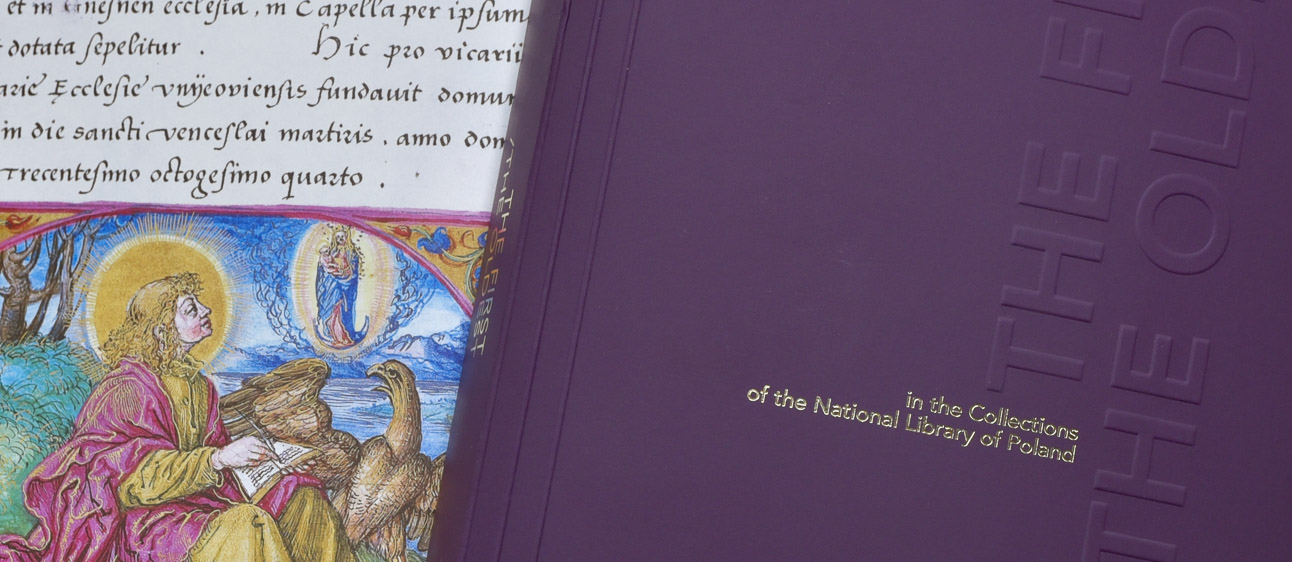
National Library of Poland releases a special publication introducing 12 Polish priceless cultural treasures from the Library's vaults – manuscripts of seminal importance to the Polish national identity.
This unique publication by the National Library of Poland is the fruit of a cycle of exhibitions organised by the National Library in celebration of the 1,050th anniversary of the baptism of Poland. The title of the work – The First/The Oldest – refers to twelve priceless written works from the collections of the National Library. The artefacts themselves rarely leave the vaults, so it was all the more significant that it was decided to put them on display in the Krasiński Palace (Palace of the Polish-Lithuanian Commonwealth) in Warsaw, with supporting information boards and accompanied by scholarly lectures and panel discussions by specialists.
Each chapter of The First/The Oldest takes as its subject a single codex from the collections of the National Library, either the entire codex or one of the texts it contains. Some chapters deal with original works that have been lost and traces of which are only preserved in copies – known as the "manuscript tradition" – enabling reconstruction of the original work. The texts under discussion originate in the eleventh to sixteenth centuries, while the manuscripts that contain them date from no later than the seventeenth century. With two exceptions – the Tyniec Sacramentary and Canonical Letters, on which the Old Annals of the Holy Cross are based – the works most likely come from areas forming part of mediaeval Poland. The manuscripts, texts and images are highly varied, both in terms of their contents and the physical artefacts containing them. Together and separately they are a testimony to Poland's historical and political awareness in the Middle Ages, its literary, liturgical and legal culture, both visual and musical.
The scientific editor of the publication, Dr Miłosz Sosnowski, states in his introduction that the "essays written by specialists are almost as varied as the subjects of their considerations, yet they are connected by the fact that they present issues related to those twelve artefacts, their content and form, and research histories. They are also connected by focusing on questions about the first centuries of Polish culture, remnants of which survive in the vault of the National Library of Poland."
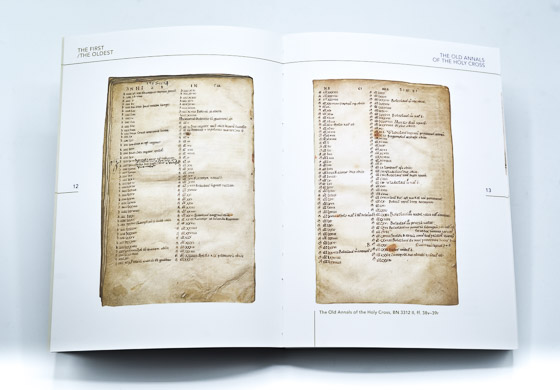
The publication opens with the Old Annals of the Holy Cross, the oldest Polish written history preserved in its original form. The Old Annals contain notes referring to the coming of Bohemian Princess Dobrawa to Polish ruler Mieszko (Dubrouka uenit ad Miskonem) and the baptism of Mieszko (Mysko dux baptizatur), incorrectly assigned to the years 966 and 967 respectively, rather than a year earlier. The work was probably written in Cracow between 1122 and 1136 and was added to the end of the codex containing the Canonical Epistles with the gloss of Anselm of Laon, a work from the school in Laon in Northern France. From at least the thirteenth century the manuscript belonged to the Cracow Cathedral Chapter, and from the fifteenth century to the Benedictine library at the Holy Cross Abbey on Łysa Góra, from where it found its way to the Załuski Library (the first National Library of Poland and the one of biggest public libraries in eighteenth-century Europe) in the second half of the eighteenth century. In 1795 it was looted together with the entire Załuski Library to St Petersburg, from where it finally returned to Poland in 1923 and was included in the collection of the National Library after its foundation in 1928. The essay by Dr Magdalena Łanuszka accompanying the presentation of the artefact provides interesting details about the work of mediaeval scribes.
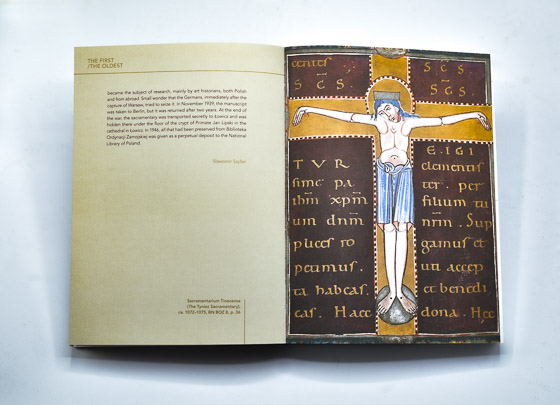
The second chapter is dedicated to the Tyniec Sacramentary, a luxuriously produced and richly ornamented liturgical book probably dating from around 1072–1073, created in Cologne and intended for the Benedictine Abbey near Cracow. The first section, containing the calendar and fixed parts of the Mass, was written in gold on purple-coloured parchment. The beginning of the Sacramentary also contained two additional multi-coloured full-page miniatures (the first of which, probably depicting Saint Gregory the Great, is missing) and three full-page initials, one of which is figurative – an image of Christ Crucified composed around the letter T, with which the Canon of the Mass begins. In the rest of the codex, the titles of each section of the Mass and the first letters of the prayers are written in gold, and the text is additionally decorated with thirteen multi-coloured, partially gilded initials. Manuscripts with this amount of decoration are rare, and are not without reason known as "royal codices". The fate of the book and its stormy history are described in the article, but the Sacramentary also serves as an opportunity for Dr Grzegorz Pac to discuss the relationship of Piast women to books in the early Middle Ages.
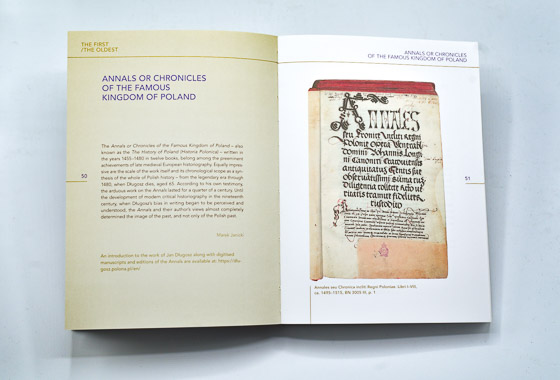
The next chapter presents one of the greatest achievements of late mediaeval European historical writing, the Annals or Chronicles of the Famous Kingdom of Poland by Jan Długosz. Written in the years 1455–1480 and consisting of twelve volumes, the Annals are impressive not just in their volume but also their historical scope. They present a synthesis of the history of Poland, from the time of legends to the year 1480, in which Długosz himself died. It was not until the nineteenth century, with the development of modern critical historiography, that Długosz's bias was noticed. Until that point in time, his vision of the past shaped people's view of the history of Poland and beyond.
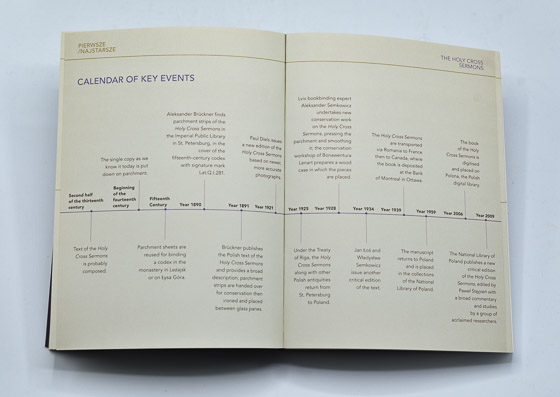
The Holy Cross Sermons are an extraordinary testimony to Polish mediaeval culture. These 18 parchment strips, used to reinforce the binding of a Latin codex from the fifteenth century, are one of the most precious artefacts to have survived to the present day. The Latin codex, possibly written in the monastery of the Order of the Holy Sepulchre in Miechów, was later found in the Benedictine library at the Holy Cross Abbey on Łysa Góra. Taken to St Petersburg after the November Uprising (1830–1831), it was discovered by Professor Alexander Brückner in 1890, who also found the parchment strips containing six sermons in Polish, one preserved in its entirety, the others only in fragments. The Latin codex was lost during the Second World War, but the priceless document, which had been separated from the binding of the mediaeval manuscript, survives in the National Library. The Holy Cross Sermons are universally recognised as the oldest extant continuous text in Polish, and the article by Dr Izabela Winiarska-Górska discusses the language of the sermons.
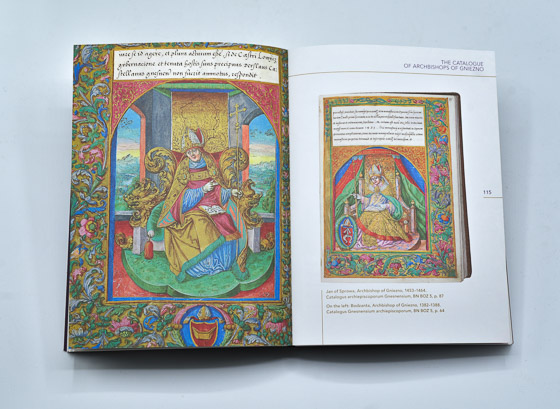
The First/The Oldest also presents what is without doubt the most beautiful book of the Polish Renaissance, Jana Długosz's Catalogue of the Archbishops of Gniezno, Primates of Poland (Catalogus archiepiscoporum Gnesnensium), illuminated by Stanisław Samostrzelnik. Preserved in the collection of the National Library, the manuscript originated in Lesser Poland in the years 1531–1535. The Latin biographical notes on the Archbishops of Gniezno and the Bishops of Cracow are enriched with realistic pictures and images of their patron saints. The monumental book is the fruit of the work of three outstanding individuals: the author of the text, Jan Długosz, a canon from Cracow and the first historian at the court of the Jagiellonians; the artist Stanisław Samostrzelnik, a royal illuminator and monk in the Cistercian Abbey in Mogiła; and the founder of the work, Piotr Tomicki, Bishop of Cracow, diplomat, politician and well known patron of the arts. The presentation of the work is accompanied by an article by the art historian Anna Wyszyńska, who discusses the miniatures it contains in its pages.
The next chapter is dedicated to the oldest surviving book written entirely in Polish, the Przemyśl Meditation. These are mediaeval apocryphal stories about the life of Jesus and Mary from the late fifteenth or very early sixteenth century. The manuscript of the Przemyśl Meditation, held by the National Library, was written in the early sixteenth century and is a copy of an older work. The work has over 400 leaves and is a comprehensive telling of the life of Mary and Christ based on the gospels, legends and apocryphal stories. Researchers believe that it was connected with the Bernardine Franciscan Friars. It represents an extremely interesting example of Polish prose from the late Middle Ages, the fact that it brings together stories from various sources and ties them into a coherent narrative demonstrating a high level of erudition and literary skills. The Przemyśl Meditation also contains a lot of lighter, humorous content, for example stories about how Jesus as a child helped Maria to season the cabbage or how he brought clay birds to life so that they would not be trodden on and broken. Dr Izabela Winiarska-Górska discusses the language of the work and the Reverend Professor Marek Starowieyski analyses its contents in the context of the New Testament apocrypha.
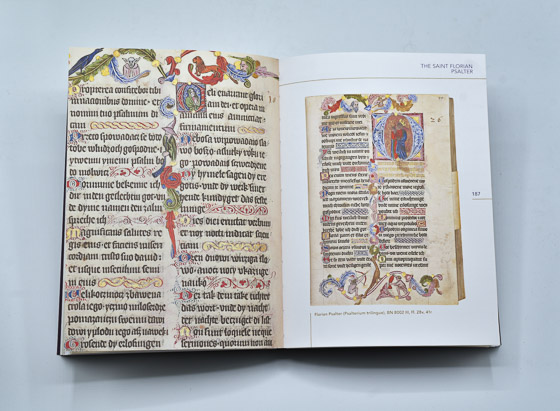
The topic of the next chapter is the Saint Florian Psalter, a priceless manuscript in which subsequent verses are in Latin, Polish and German. The work was probably written in the late fourteenth, early fifteenth century, possibly as a gift for Jadwiga of Poland (later Saint Jadwiga) and used after her death by other Polish queens. The Saint Florian Psalter caused an academic sensation when rediscovered in the nineteenth century in the St Florian Monastery in Austria, and remains to this day one of the greatest mysteries of the Polish Middle Ages. In addition to the trilingual text of Psalms, the book contains several dozen leaves featuring decorations which some investigators have suggested contain astrological symbols, others mnemonic diagrams to help with learning the text, and still others images of Master Yoda, Nosferatu and Gandalf the Grey. The accompanying article by Marcin Kuźmicki delves into the secrets of the work, which has been analysed with the help of hyperspectral imaging.
The publication also includes the Statutes of King Casimir the Great, a collection of laws issued by Casimir III the Great, King of Poland, and the only codification of court law of its scale from the times of the Piast dynasty in Poland. Written in the mid-fourteenth century, the statutes cover criminal liability, issues relating to land ownership and inheritance, and civil and procedural law. Dr Grzegorz M. Kowalski writes on the role of the legislator and the significance of the involvement of the courts in areas at the time generally governed by common law.
Also presented in the publication is the Polish Chronicle of Master Wincenty, also known as the Kadłubek Chronicle, from the late twelfth, early thirteenth century. Alongside the Polish Chronicles of Gallus Anonymus, this is one of the oldest works of history written in Poland. Its pages contain stories not only about the achievements of historical rulers, but also Krak, Wanda, Popiel and the "holophagus" – the monster known today as the Wawel Dragon. Alexander the Great and Julius Caesar also appear in the history of Poland, and the entire chronicle is full of erudite references to religion, philosophy and Roman law. Wincenty himself, a bishop of Cracow, was one of the greatest intellectuals of his time, who gave up his ecclesiastical position under mysterious circumstances and spent his final years in the Cistercian Monastery in Jędrzejów. In the eighteenth century he was proclaimed Blessed by the Catholic church. Dr Edward Skibiński writes in the accompanying article about how we should read the Polish Chronicle.
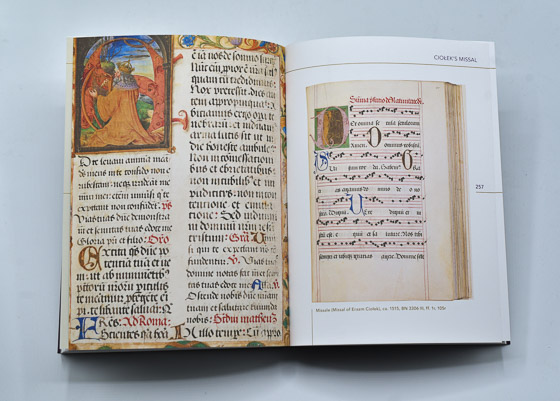
The next chapter presents the priceless Missal of Erazm Ciołek, a manuscript from the beginning of the sixteenth century, decorated with beautiful Renaissance miniatures by the greatest Polish illuminators of the day, including Stanisław Samostrzelnik. Some of the illuminations are inspired by the works of Albrecht Dürer and Hans Süss von Kulmbach – interestingly, the Missal was created just a few years after the publication of works by the German masters. Ciołek, a bishop and royal diplomat, was not only an extremely gifted politician but also a patron of the arts, well known in Europe. The Missal in the collection of the National Library was created at his request and is in many ways ahead of its time. Although it is assumed that when it was created (1514–1518), Poland was still in the Middle Ages, its decorations are typical of the Italian Renaissance. The uniqueness of Ciołek's Missal also lies in the fact that it dates from a period when printing began to gain popularity – the end of the era of books created by calligraphers and illuminators which took into account the preferences of their client. The tastes and preferences of Ciołek, who as a diplomat travelled to different regions, also reflect the changes that were taking place in the artistic culture of Europe in the late fifteenth and early sixteenth century. In her accompanying article, Magdalena Łanuszka discusses some of the highly original features of the manuscript.
The publication also contains an academic study of the manuscript of the Bogurodzica. This song, traditionally considered the earliest Polish national anthem, also marks the very beginnings of Polish literature. Jan Długosz called it the carmen patrium – the hymn of the motherland. Sung at the most important national occasions, such as before key battles, during coronations and in solemn church rites, it served for centuries as the national anthem. The first two stanzas, representing the original, "archaic" part of the song, were attributed in the Middle Ages to St Wojciech (Adalbert of Prague). However, modern research indicates that they are more likely to date from the thirteenth century, and the later stanzas from even later. The Bogurodzica has survived in many different versions or "redactions". The article by Dr Paweł Gancarczyk discusses disputes surrounding the nature of the melody of the Bogurodzica, in particular the question of whether it is a knight's song or a prayer.
The final chapter of The First/The Oldest presents the oldest surviving manuscript copy of the Polish Chronicles by the mysterious writer known only as Gallus Anonymus. The Chronicles describe Poland from the time of the legendary rulers Popiel and Piast, covering the history of the kings and princes up to the era of Bolesław III Wrymouth, in whose court the Chronicles were written, at the beginning of the twelfth century. The work is a knightly tale about the Piast dynasty, in particular Bolesław III Wrymouth, who was still alive at the time the work was written and to whom two of the three sections are devoted. Gallus Anonymus describes the deeds of Bolesław, such as his dispute with his brother Zbigniew, the war with the Holy Roman Empire and the capture of Kołobrzeg, using a variety of highly sophisticated literary forms, including rhythmic prose, songs and speech. The identity of the author of the Chronicles has been the subject of academic dispute for many centuries. Although traditionally considered to be a Gaul (that is, a Frenchman),and even assigned the name Marcin (as a result of a misinterpretation of Długosz) he is still known to this day as Anonymus. An article by Dr Paweł Żmudzki treats the history of interpretations of the Chronicles.
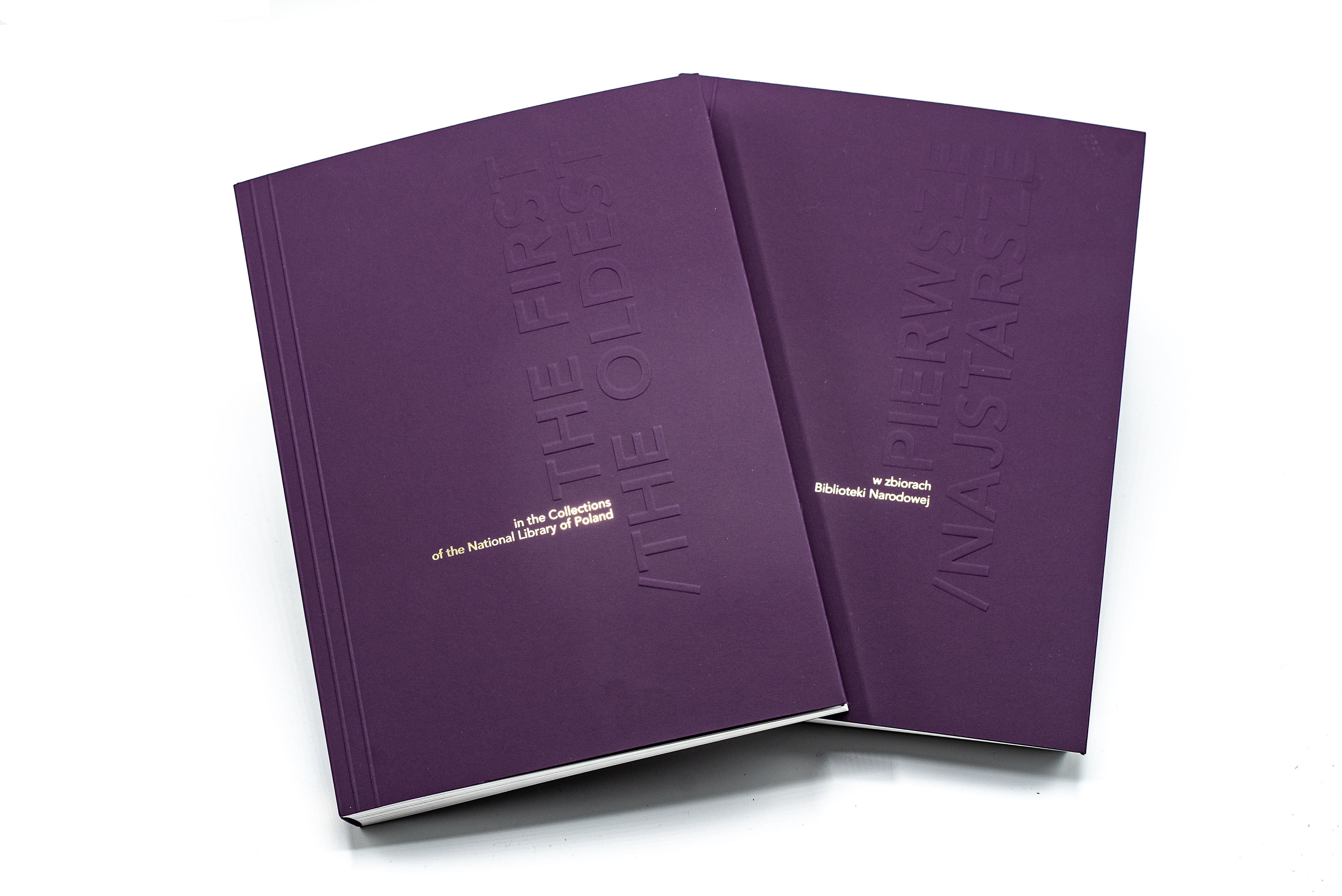
Two language versions are published separately and available from the online bookshop of the National Library of Poland.